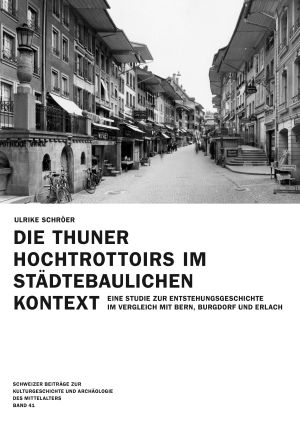
How to Cite
License

This work is licensed under a Creative Commons Attribution-NonCommercial-ShareAlike 4.0 International License.
Published
Die Thuner Hochtrottoirs im städtebaulichen Kontext
Eine Studie zur Entstehungsgeschichte im Vergleich mit Bern, Burgdorf und Erlach
The specific character of the Obere Hauptgasse in Thun is shaped by its unusual cross section. Ground floors known as raised pavements, arcades or terraces jutting out on both sides form a row of two-storey shops. Whether this was planned, or whether it resulted from the construction type or just by coincidence, the background of this streetscape that stands out from the otherwise anonymous urban development has never before been investigated in detail, despite its quaintness and originality. The question is whether the phenomenon of the double access was a very early example of this type of architecture, a consequence of a later development or even a product of urban planning.
Due to the fragmentary nature of the architectural contexts and an incomplete evidentiary background, it has not yet been possible to firmly establish the origins of Thun’s raised pavements. While the investigation uncovered evidence to suggest that the street gradient had been altered, it was not possible to provide irrefutable proof of this. Even the date proposed for the initial construction of the raised pavements in the 16th/17th centuries seems rather vague. What is certain, however, is that today’s homogenous appearance is in fact based on complex causes and decisions.






